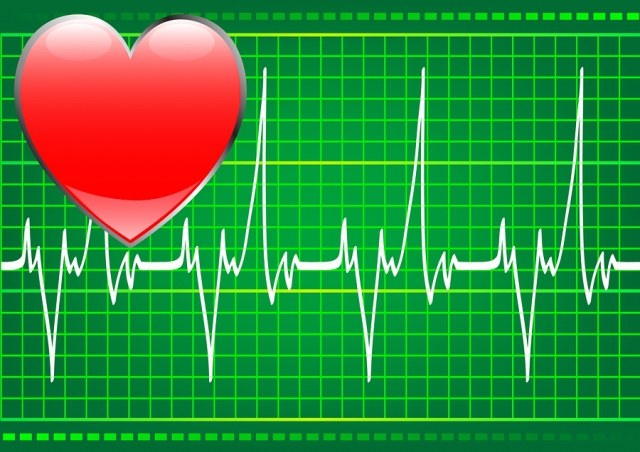Meaning of the word "heart" differs from its scientific meaning. The heartbeat is called a heart, which the person himself can hear a loud knock in the chest, radiating in my head. Doctors also called the heartbeat of the one cycle of the heart consists of contraction and relaxation (systole and diastole).
What is called the heartbeat in the home, can already be considered a violation. Normal people should not listen to the heart. However, if such a phenomenon occurs briefly when the big physical activity is also normal. Alarm should be considered a heartbeat at rest. If for an hour or two of complete rest, a normal heart function is not restored – it is cause for seeking medical attention.
For a proper study of the pulse of the people must be in a calm state. Heart rate is determined by many factors: state of health, degree of fitness, age.
Adult aged 15 to 50 years the norm is the frequency from 60 to 80 beats per minute. The younger the person, the more intense will be the work of the heart. The rapid heartbeat is observed in the fetus in the 10th week of pregnancy – up to 190 beats per minute.
In the babies under one year of age, the norm is 110-170 beats, the child from one year to 2 years – 94-154, from 2 to 4 – 90-140, up to 6 years – 86-126, 6-8 years, 78-118, 8-10 years – 68-108, 10-12 years 60-100, while 12-15-year-olds the norm ranges from 55 to 95 beats.
There are age norms and for the elderly. 50 to 60 years, the norm is between 64 and 84 beats per minute, and for people older than 60 years – 69-89 bumps.
To calculate normal heart beat during exercise there is a special formula: from 220 subtract a person's age. For example, if a person is 30 years old, his normal heart rate during exercise should not exceed 190 beats per minute. This formula is used by the athletes.
Slow heartbeat is called bradycardia. This condition is normal in well-trained people, for example, in athletes, but if a person is not, is a violation. The status of the bradycardia may be accompanied by pain in the heart area, dizziness and even loss of consciousness. Bradycardia (the number of heartbeats per minute less than 40) leads to heart failure.
Tachycardia is a rapid heartbeat. As bradycardia, it leads to violation of blood circulation, resulting in organs, including the heart getting enough oxygen. Poor blood flow to the heart may eventually lead to heart attack.
Another disturbance of heart rhythm – extrasystoles, the appearance of the extraordinary cuts. The person thus feels a push in the heart or Vice versa – fading, he lacks air. This condition may be accompanied by feelings of fear and anxiety.
Any abnormal heart rhythm is a sign of a serious disease and requires treatment by a cardiologist.
The normal heart
What is called the heartbeat in the home, can already be considered a violation. Normal people should not listen to the heart. However, if such a phenomenon occurs briefly when the big physical activity is also normal. Alarm should be considered a heartbeat at rest. If for an hour or two of complete rest, a normal heart function is not restored – it is cause for seeking medical attention.
For a proper study of the pulse of the people must be in a calm state. Heart rate is determined by many factors: state of health, degree of fitness, age.
Adult aged 15 to 50 years the norm is the frequency from 60 to 80 beats per minute. The younger the person, the more intense will be the work of the heart. The rapid heartbeat is observed in the fetus in the 10th week of pregnancy – up to 190 beats per minute.
In the babies under one year of age, the norm is 110-170 beats, the child from one year to 2 years – 94-154, from 2 to 4 – 90-140, up to 6 years – 86-126, 6-8 years, 78-118, 8-10 years – 68-108, 10-12 years 60-100, while 12-15-year-olds the norm ranges from 55 to 95 beats.
There are age norms and for the elderly. 50 to 60 years, the norm is between 64 and 84 beats per minute, and for people older than 60 years – 69-89 bumps.
To calculate normal heart beat during exercise there is a special formula: from 220 subtract a person's age. For example, if a person is 30 years old, his normal heart rate during exercise should not exceed 190 beats per minute. This formula is used by the athletes.
Disorders of the heart
Slow heartbeat is called bradycardia. This condition is normal in well-trained people, for example, in athletes, but if a person is not, is a violation. The status of the bradycardia may be accompanied by pain in the heart area, dizziness and even loss of consciousness. Bradycardia (the number of heartbeats per minute less than 40) leads to heart failure.
Tachycardia is a rapid heartbeat. As bradycardia, it leads to violation of blood circulation, resulting in organs, including the heart getting enough oxygen. Poor blood flow to the heart may eventually lead to heart attack.
Another disturbance of heart rhythm – extrasystoles, the appearance of the extraordinary cuts. The person thus feels a push in the heart or Vice versa – fading, he lacks air. This condition may be accompanied by feelings of fear and anxiety.
Any abnormal heart rhythm is a sign of a serious disease and requires treatment by a cardiologist.
